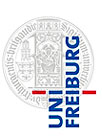What we do
We want to find chemical signals that are used by plants and fungi to communicate. When we know the signals, we want to use them to modulate the communication for the sake of humans – for a sustainable agriculture. In addition, we want to help by our research to render our agriculture more sustainable. Therefore, the dialogue with partners from agriculture and industry is very important for us. How the current debate on the referendum „Pro Biene“ in Baden-Württemberg demonstrate, we also have to keep track on the dialogue with the public. These goals are pursued in several steps, so called work packages:
1. Our research
1.1 Biodiversity of fungi and plants
Who wants to find something, needs something to search in. We utilise collections of fungi and plants, where we expect chemical signals. Partner IBWF provides to the project a collection of more than 20000 fungal strains, partner KIT-BOT a collection of more than 6000 plant species.
1.2 Chip technology
To study chemical communication in entire plants would be cumbersome. We work, therefore with plant and fungal cell cultures. The cells should communicate on a laboratory chip chemically, but remain touch-free – we are heading for signals with remote effect. A microfluidic chip developed by partners KIT-IMT and KIT-BOT serves as starting point for a novel ecosystem on chip.
1.3 Readout assay for plant immunity
We search signals that activate plant immunity (for a kind of „plant vaccination“). Since we have to test many signals and combinations, we need a readout system that works with plant cells. For this purpose, we use a gene switch, identified by partner KIT-BOT originating from a Wild European Grape endowed with a particularly strong immune system. This gene switch drives a gene from a jellyfish, which encodes the Green Fluorescent Protein, and introduce the entire set into the genome of our test cells. Each time, when a signal activates immunity, we can then measure a green fluorescence.
1.4 Readout assay for growth regulation
We also search signals that inhibit (or enhance) plant growth. This allows to develop bioherbicides or growth stimulators. As readout system, we use seedlings of the model plant thale cress (Arabidopsis thaliana) that are so small that they can be integrated into a chip. Here, partner Unistra has developed readout systems, also on base of the Green Fluorescent Protein, that allow to follow the so called cytoskeleton, a central regulator for growth.
1.5 Elucidation of chemical structure and synthesis of signals
When a promising activity (such as immunity activation or growth regulation), the responsible molecule needs to be identified and elucidated. This runs through so called activitiy-guided fractionation. The solution is separated according to chemical properties into fractions, and each fraction is tested for the respective activity. The responsible fraction is separated further, till the effect can be linked with few candidate molecules. These molecules will then be identified by partner ALUF using cutting-edge chemistry. In a second step, these compounds are then synthetised in cooperation with partner IBWF in sufficient amounts to allow for closer analysis of the mode of action.
1.6 Investigation of biological effects
Our long-term goal is to use the active compounds identified in the course of the project for sustainable plant protection. This requires a link with agricultural practice. This link is provided by the Swiss partner, the Research Institute for Biological Agriculture (FiBL), participating as associated partner without Interreg funding. FiBL has build up long-standing expertise in testing and developing novel plant protection products for organic farming. Special focus is put upon viticulture, where plant protection has to be especially intense to secure yield. First, candidate compounds can be tested in the lab scale on grapevine seedlings. During later stages, products can also be tested in the own experimental vineyard. Since pathogenic microorganisms employ „chemical warfare“ to outcompete each other, during a first step candidate compounds from the fungal strain selection of partner IBWF will be tested at FiBL. For this purpose, a zoospore activity test system against the pathogen causing Downy Mildew of Grapevine, the Oomycete P. viticola has been established. In addition, spore germination assays and seedling inoculation assays against other important plant pathogens, such as Phytophthora infestans (causing Potato Rot) and Venturia inaequalis (causing Apple Scarf) will be used.
2. Dialogue with partners
2.1 Dialogue with partners in agriculture and industry
To let the project results bear fruits, we need the commitment and support from partners in agriculture (such as wine makers or fruit producers) and industry (such as companies developing plant protection compounds, or work in chip fabrication). Here, we will conduct polls to find out, which topics and problems are relevant for application, but will also explore in direct interaction with industrial partners, which results should be developed further in future joint activities.
2.2 Dialogue with the public
Our research is ultimately funded by the public. Thus, the public has the right to hear, what we do with this money. We take this obligation very seriously and not only inform through the current website about our work, but also use regular press releases, brochures, public talks (e.g. in frame of the general public relations offered by all partner institutions) about our activities. We also want to demonstrate by this project, how the pronounced tradition of scientific culture in our region contributes to the advance of society.







